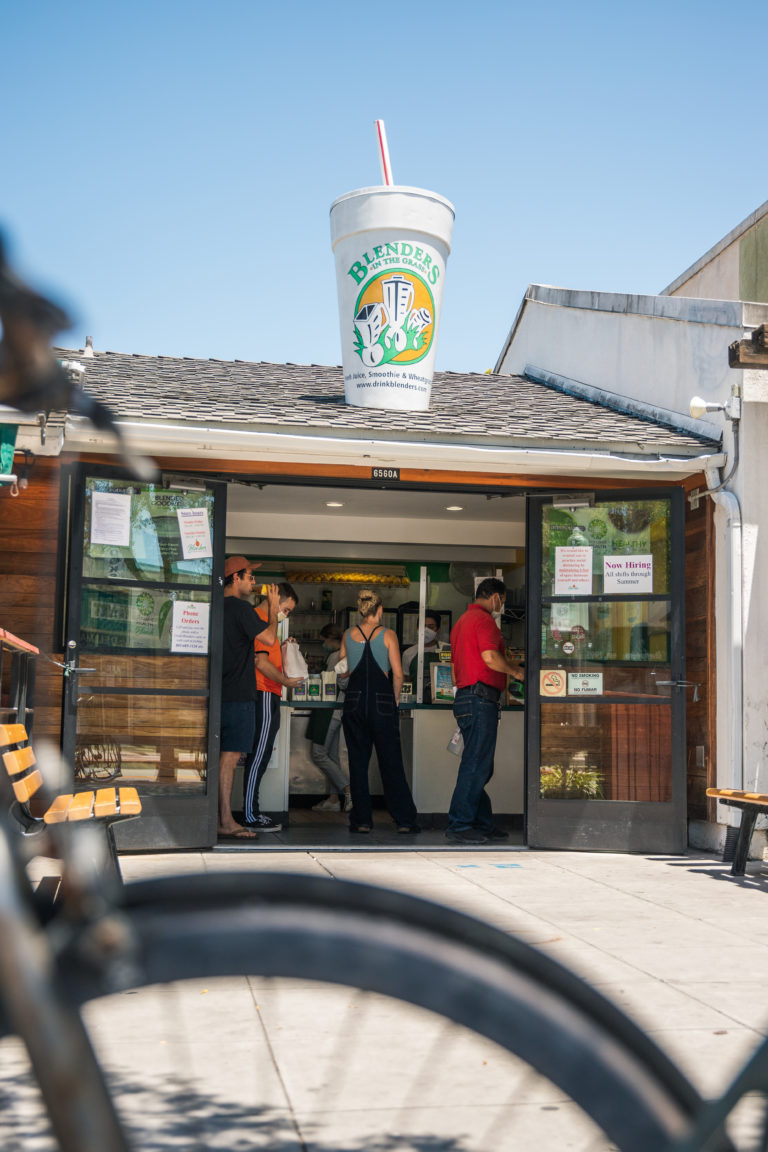
Lauren Luna
Campus Beat Reporter
On Thursday, May 21, Santa Barbara county released Health Officer Order 2020 8.2, which stipulates that low-risk businesses — including dine-in restaurants and retail shops — may resume business so long as they abide by proper social distancing protocol. Both incorporated and unincorporated Santa Barbara county territory fall under the grounds of this order, including Isla Vista and its many local businesses.
While the order offers some insight into what the future holds for business, its terms do come with a few caveats. The order states that higher-risk venues like bars and movie theatres are not permitted to reopen, though Study Hall in Isla Vista reopened its doors on the same day of the order’s release. Additionally, all businesses seeking to reopen must complete a self-certification form before providing services to the public once again.
The Santa Barbara community buzzed with a mix of elation and anxiety following the publicization of the order, as people on social media expressed both concerns and hopes for the future going forward with the order. Some businesses in Isla Vista like Rockfire Grill eagerly signed on to reopen its doors as soon as Friday, May 22. In downtown Santa Barbara, State Street held a no-car promenade in celebration of the order, as newly-reopened businesses, which pepper the edges of the avenue, opened their doors for the first time in over two months.
Though this announcement seems like good news at first, it does come with a series of implications that can be easily overlooked.
Right now, the national COVID-19 curve is demonstrating a series of fluctuations which still leave the claim that we’ve “flattened the curve” questionable. While urban centers like New York and Detroit are seeing a steady decline in cases, the trajectory of cases has only moved upwards in other parts of the country, including California. This past week, Santa Barbara county has received an average of 11 new cases per day, adding up to 1,551 confirmed cases in the county at the time of writing this article.
However, this data may also be skewed by the recent outbreak in the Lompoc Prison; 971 of the confirmed cases came from the penitentiary, which accounts for about 63 percent of total cases in the county. Experts say that the true number of infected individuals remains unknown due to a lack of accessibility in testing for the virus.
The newly released Health Officer Order offers the Isla Vista business community more mobility in its transition from hard COVID-19 countermeasures to a more sustainable business model that remains cautious of the pandemic. But, this does not mean that every business will be up and running exactly as they did before March. Governor Gavin Newsom encourages business owners to keep up contactless alternatives to service if they are able to do so. For this reason, and because businesses still need to fill out their self-certification forms before transitioning, not many businesses in Isla Vista have given word as to whether or not they plan to reinstate in-store shopping or dining options.
Though this order signifies progress in the restoration of ordinary business, it does not mean that social distancing restrictions can be immediately eased. By extension, it doesn’t mean that business sales will bounce back once they reopen, either. The pandemic is still a handicap on daily life, and businesses say that our standards of normal following the pandemic may even change permanently. Here’s what local franchises in Isla Vista have been doing through the pandemic and what their visions are for the future of their businesses.
As an essential business, the Isla Vista Food Cooperative (IV Co-op) has not witnessed a dramatic change in sales going by numbers. General manager Melissa Cohen cites that customers now come in more sporadically, often buying more goods in one trip per week rather than buying a few odd items every other day as seen pre-pandemic.
Cohen’s greatest concern revolves around incoming Isla Vista residents that may come from places with different concentrations of the virus. Isla Vista’s streets are beginning to gradually fill up again, though some residents remain wary of the increasing volume of people outside. Cohen wants to make sure that the IV Co-op can still protect at-risk customers even through the uncertainty as to where everyone shopping in the store has been. To promote this safety, the store even created an online order experience for shoppers who may not be familiar with the stock at the store and want a focused preview before coming in to shop.
“I think that how we relate to places like businesses will change in that we’ll have to become more conscientious not just for ourselves, but also for those next to us,” said Cohen in a phone interview with The Bottom Line. “If we’re lucky, we’ll get an awakening towards what mutual aid in the community can look like.”
The current pandemic has brought on an intense and upsetting period of uncertainty for the general economic sphere. While large corporations suffer due to decreases in consumption and limited availability of workers, small businesses carry the same pressures that large corporations have compounded with barriers in promotion, funding, and maintaining their resources.










